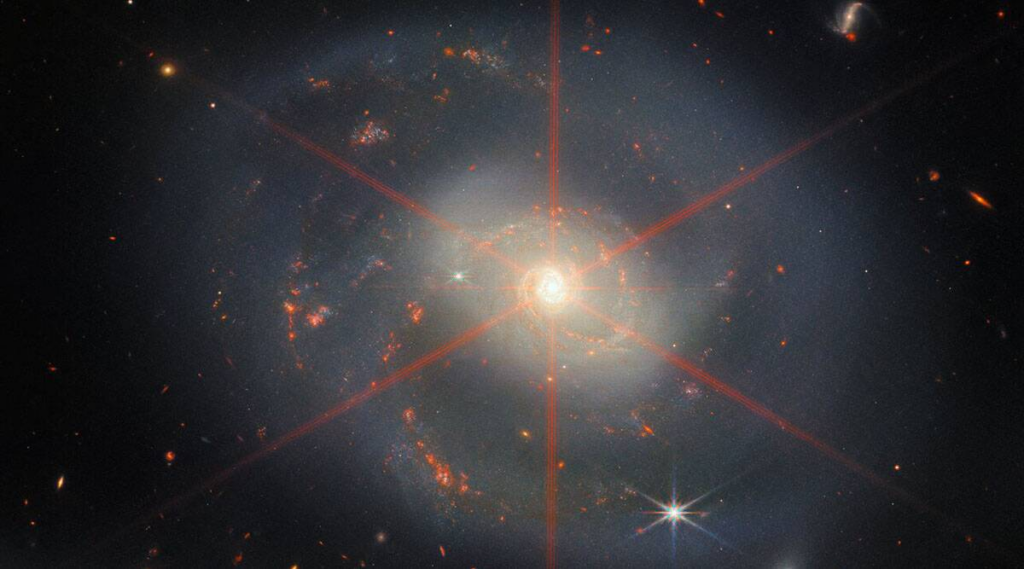NASA’s telescopes have acquired a breathtaking image of Centaurus A (Cen A), a bright galaxy 12 million light-years from Earth that contains a monstrous black hole.
Long by 13,000 Light-Years
The image, a composite of data from multiple NASA observatories, depicts the supermassive black hole at the center of the galaxy consuming gas and dust while emitting enormous streams of high-energy particles and other substances.
As seen in the upper left corner of the image, the projectile emanating from the black hole is an astounding 13,000 light-years long!
In addition, a dust channel is believed to have been formed by the collision of a smaller galaxy with our galaxy millions of years ago.
Blue indicates X-ray light acquired by NASA’s Chandra X-ray Observatory, orange indicates X-rays detected by NASA’s Imaging X-ray Polarimetry Explorer (IXPE) satellite, and white and gray represent the optical light from the European Southern Observatory in Chile.
The Chandra X-ray Observatory has been studying Cen A since 1999, but the launch of IXPE in 2021 has provided new opportunities to investigate the galaxy.
IXPE’s capacity to measure the polarization of X-ray light, a property related to the arrangement of electromagnetic waves, enables scientists to investigate how cosmic objects such as Cen A accelerate particles to high speeds and energies.
IXPE is expected to provide new insights into the origin of the X-ray emissions in the jets of Cen A, which is of particular interest to scientists.
Nevertheless, despite their efforts, scientists have not yet detected X-ray polarization at Cen A, suggesting that heavier particles, such as protons, are not the source of the X-rays. However, researchers are meticulously analyzing the data to uncover additional information.

Cen A is the fifth brightest galaxy visible in the night sky, and its discovery has contributed significantly to our understanding of the cosmos. The supermassive black hole at the center of Cen A is only one of the mysteries of the universe that scientists are still attempting to unravel.
How extraordinary are supermassive black holes?
Black holes are a cosmological marvel, but their dimensions are monstrous. Have you ever pondered the superlative nature of supermassive black holes?
NASA has released an animation depicting the immense size of these enormous, voracious black holes.

It is known that numerous large galaxies, including the Milky Way, contain supermassive black holes at their nuclei. As depicted in the animation, the mass of these cosmic titans is 100,000 to billions of times greater than the mass of our sun.
Check out this narrative if you want to learn more about these cosmic beasts and visualize how large and powerful they are.

